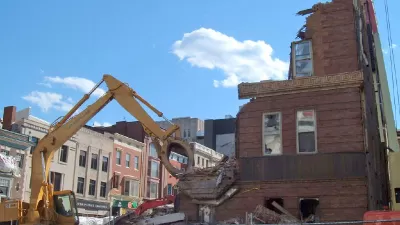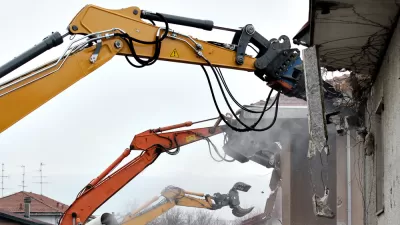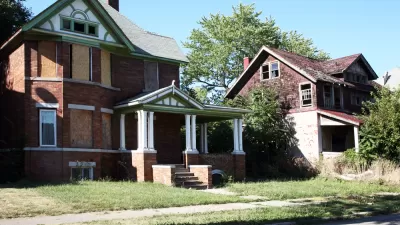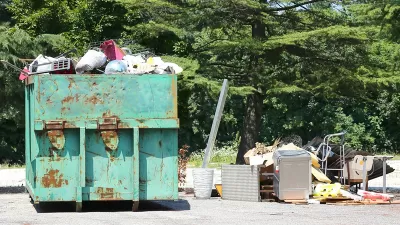Data regarding ongoing demolitions of blighted properties in cities across the U.S. has turned up some unexpected consequences: the spread of lead toxins into the surrounding community.

Eilís O’Neill of The Nationreports on the potentially devastating environmental consequences of blight removal. Older homes being demolished will often contain lead-based paint that when released into the atmosphere can be inhaled and absorbed into the bloodstream of children nearby. Studies have shown the harmful impacts of elevated lead in the bloodstream of infants, including " learning disabilities, speech delays, hearing loss, lowered IQ, and increased hyperactivity and aggression."
In cities, such as Detroit, where removal of older homes is an ongoing process, children in the vicinity of the demolition are now showing elevated blood-lead levels.
...in 2016, according to the Michigan Department of Health and Human Services, the city’s blood-lead levels spiked. While this unsettling uptick coincided with increased testing of vulnerable populations, some critics say the sharp increase can’t be attributable to testing alone, and that the city is removing lead with one hand while adding it back with another.
For these critics, the blame for the spike lies with a federally funded “blight removal” program that is perhaps the biggest housing-demolition program in history.
O'Neill reports that currently there are three demolition strategies in use: the dry method which is the quickest and easiest, but tends to kick up the most dust; the wet-wet protocol, which includes wetting the house during the demolition process to keep most of the dust contained to within 350 feet of the site; and the newer Baltimore protocol, which covers the house in plastic and keeps the house wet with multiple hoses throughout the demo process. The Baltimore protocol has been shown to limit dust exposure to approximately within 60 feet of the demo site.
FULL STORY: Are We Doing All We Can to Prevent Lead Poisoning?

Alabama: Trump Terminates Settlements for Black Communities Harmed By Raw Sewage
Trump deemed the landmark civil rights agreement “illegal DEI and environmental justice policy.”

Planetizen Federal Action Tracker
A weekly monitor of how Trump’s orders and actions are impacting planners and planning in America.

Why Should We Subsidize Public Transportation?
Many public transit agencies face financial stress due to rising costs, declining fare revenue, and declining subsidies. Transit advocates must provide a strong business case for increasing public transit funding.

Understanding Road Diets
An explainer from Momentum highlights the advantages of reducing vehicle lanes in favor of more bike, transit, and pedestrian infrastructure.

New California Law Regulates Warehouse Pollution
A new law tightens building and emissions regulations for large distribution warehouses to mitigate air pollution and traffic in surrounding communities.

Phoenix Announces Opening Date for Light Rail Extension
The South Central extension will connect South Phoenix to downtown and other major hubs starting on June 7.
Urban Design for Planners 1: Software Tools
This six-course series explores essential urban design concepts using open source software and equips planners with the tools they need to participate fully in the urban design process.
Planning for Universal Design
Learn the tools for implementing Universal Design in planning regulations.
Caltrans
Smith Gee Studio
Institute for Housing and Urban Development Studies (IHS)
City of Grandview
Harvard GSD Executive Education
Toledo-Lucas County Plan Commissions
Salt Lake City
NYU Wagner Graduate School of Public Service





























